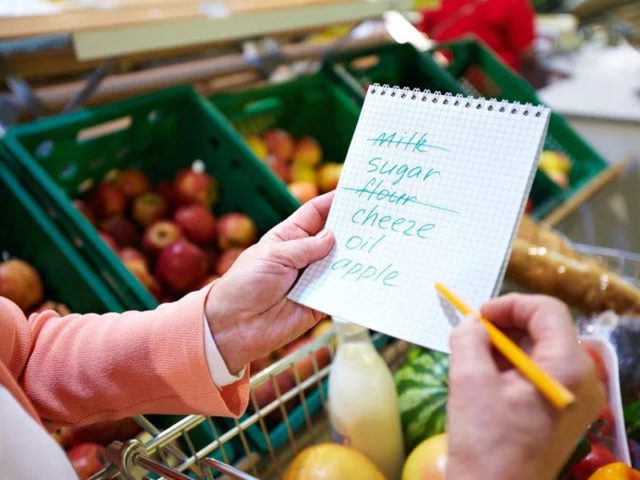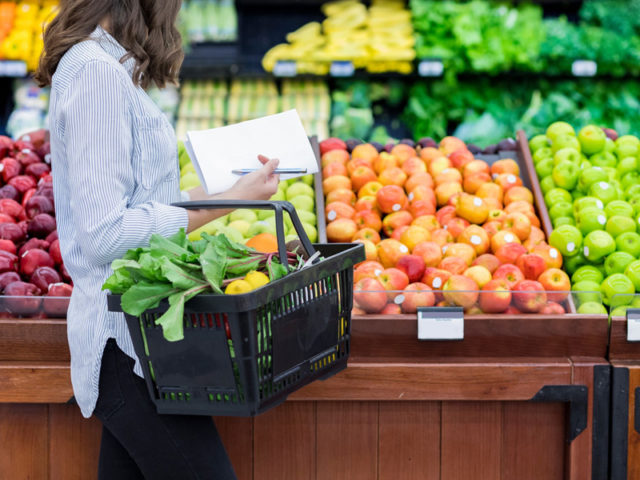Do you really need multiple packs of Maggi or a stash of Oreos everytime you go grocery shopping? Even if some of us are conscious about what we buy, the patterns in which grocery stores are usually set – we lay our eyes on the items that we hadn’t even considered buying but we still end up putting them in our carts. So let’s explore how you can shop for the right grocery items to lead a healthy lifestyle. Click here to know which monsoon fruits and vegetables are healthy for you in this season.
What Is A Healthy Grocery Shopping

The past year has taught us to be more mindful about what we eat and take good care of ourselves. This also includes eating foods that are nutritious so that it nourishes our bodies and provides us with energy. While food should never be categorised as good or bad, we should remember that in the end, it’s all about nutrition. Some foods are more nutritious than others. Here is an example of things you can include in your healthy shopping guide. Confused between wheat vs jowar? Read the article to finally know which one’s better and why.
- Fruits: Apples, bananas + any seasonal fruits.
- Non Starchy Vegetables: Broccoli, onions, spinach and peppers.
- Starchy Vegetables: Sweet potatoes, potatoes, corn and peas.
- Beans And Grains: Chickpeas, brown rice, wheat flours, black beans, and quinoa.
- Proteins: Eggs, chicken breast, lentils and paneer.
- Nuts And Dry Fruits: Almonds, cashews, raisins, pistachios, dried figs, dates and walnuts.
- Dairy And Non-Dairy Substitutes: Cashew milk, coconut milk, cheese, and milk.
- Miscellaneous: Ground coffee, dark chocolate, banana plantain chips.

5 Tips For Healthy Grocery Shopping
1. Plan A Weekly Menu

If you spend time planning your meals, it will help you know exactly what you want to shop for. Let’s say if you are planning on making fried rice on a Tuesday, just writing down the ingredients you’ll need to cook it will be helpful as you’ll then buy exactly what you need and not what you think you might need. Prepping your meals is a great practice especially if you are someone who has a busy schedule. You can just chop your veggies beforehand or knead the dough and keep it so that you can cook at home without worrying about how much time it will take.
2. Choose Real Foods

Whenever you are buying something that comes in a packet see that you make sure it’s authentic, for example, if your brown bread is 100% whole wheat it means that it has no refined flour in it and is hence healthier. Go for 100% fruit juice instead of fruit concentrates as these juices have a lot more sugar in them that can disturb your healthy meal planning.
Find here 5 delicious fruity recipes for a healthy breakfast.
3. Don’t Go To The Store Hungry

When you are hungry everything starts to look 2x more delicious than it actually is. A person with an empty stomach will obviously think of buying stuff that tastes good rather than what is healthy. You’ll also end up spending as you will think you will eat everything you buy. So, eat a healthy meal when you leave your house for grocery shopping.
4. Read The Labels When In Doubt

You might have seen a lot of food products that promise to be healthy but aren’t. For example, some protein bars even though they are high in protein, they are high in sugar too. That makes them not-so-healthy and also doesn’t abide by our healthy shopping guide. So check their labels to know what is really in the food item before buying anything.
5. Buy More Fresh Produce

Getting more greens is always a good choice. Focus on buying more fruits and vegetables. If you are a non-vegetarian, get meat that is freshly produced or eggs that are not too old. You can either go to a supermarket for this or you can get this at your local sabzi mandi too. Usually, sabzi mandis sell it cheaper.

As you have heard time and again, you are what you eat so make sure that you are healthy. If this shopping guide was helpful leave a comment telling us how your next grocery list is going to look like.


